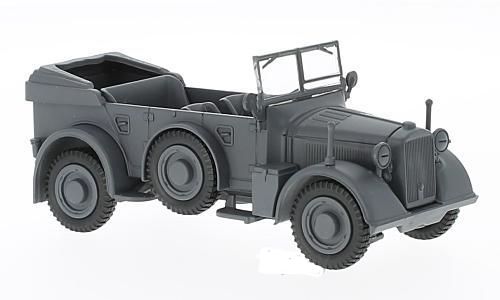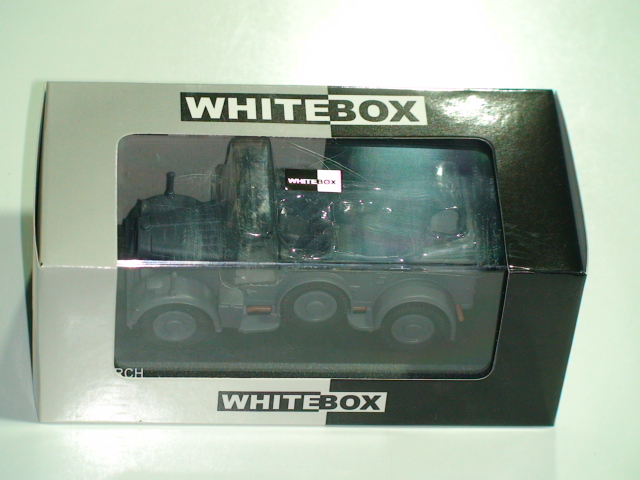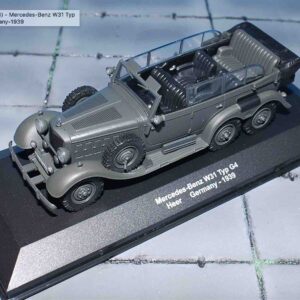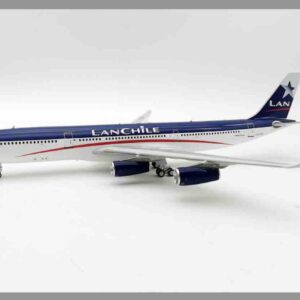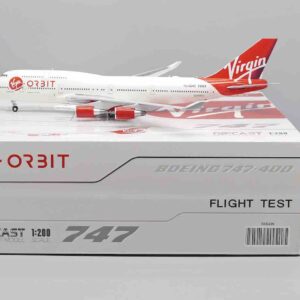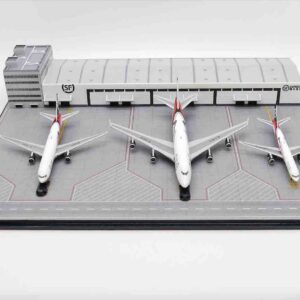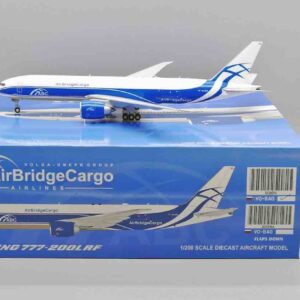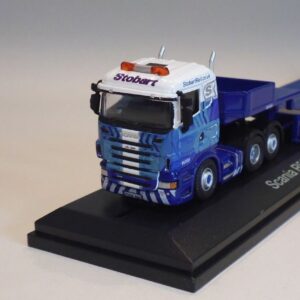White BOX – Horch 901 Kfz.15 , Wehrmacht 1937 (dark grey)
899 Kč
Skladem
Popis
- sběratelský model vojenské techniky Horch 901 1/43 - provedení: kovový model s plastovými částmi - model je v kvalitním provedení
Horch 901
Horch [hɔʁç] was a car brand manufactured in Germany by August Horch & Cie, at the beginning of the 20th century.
It is the direct ancestor of the present day Audi company, which in turn came out of Auto Union, formed in 1932 when Horch merged with DKW, Wanderer and the historic Audi enterprise which August Horch founded in 1910.Einheits-PKW (German for ‚standard passenger cars‘) were supplied to the Wehrmacht between 1936 and 1943 in the three versions Leichter Einheits-PKW, Mittlerer Einheits-PKW and Schwerer Einheits-PKW (light, medium and heavy passenger car). These vehicles were supposed to replace the civilian vehicles previously procured by the Reichswehr with cross-country mobile vehicles that conformed with military requirements while simplifying logistics and maintenance by using standardized components. The program achieved neither of these goals.
The medium off-road passenger car was built by the Opelwerk Brandenburg (chassis only) and Auto Union: Siegmar factory (former Wanderer) in Siegmar-Schönau (today a part of Chemnitz) and Horch factory in Zwickau. The Wehrmacht used them as troop transports (Kfz. 11, with tow bar: Kfz. 12, 6-seat version: Kfz. 21), in the signals corps (Kfz. 15, Kfz. 17, Kfz. 17/1) and for artillery reconnaissance (Kfz. 16 and Kfz. 16/1). Some 12,000 units were built. The most conspicuous change of the 1940 design simplification was the elimination of the mid-mounted spare wheels which simplified the bodywork and gave more interior space. The cars had a Horch V8 (Opel: in-line 6-cylinder) and a curb weight of 2,700 kg (open-topped Horch version: 3,080 kg) and was the only type that did not even initially have four-wheel steering. 80% of military branches rejected the vehicle as unfit for wartime service.

